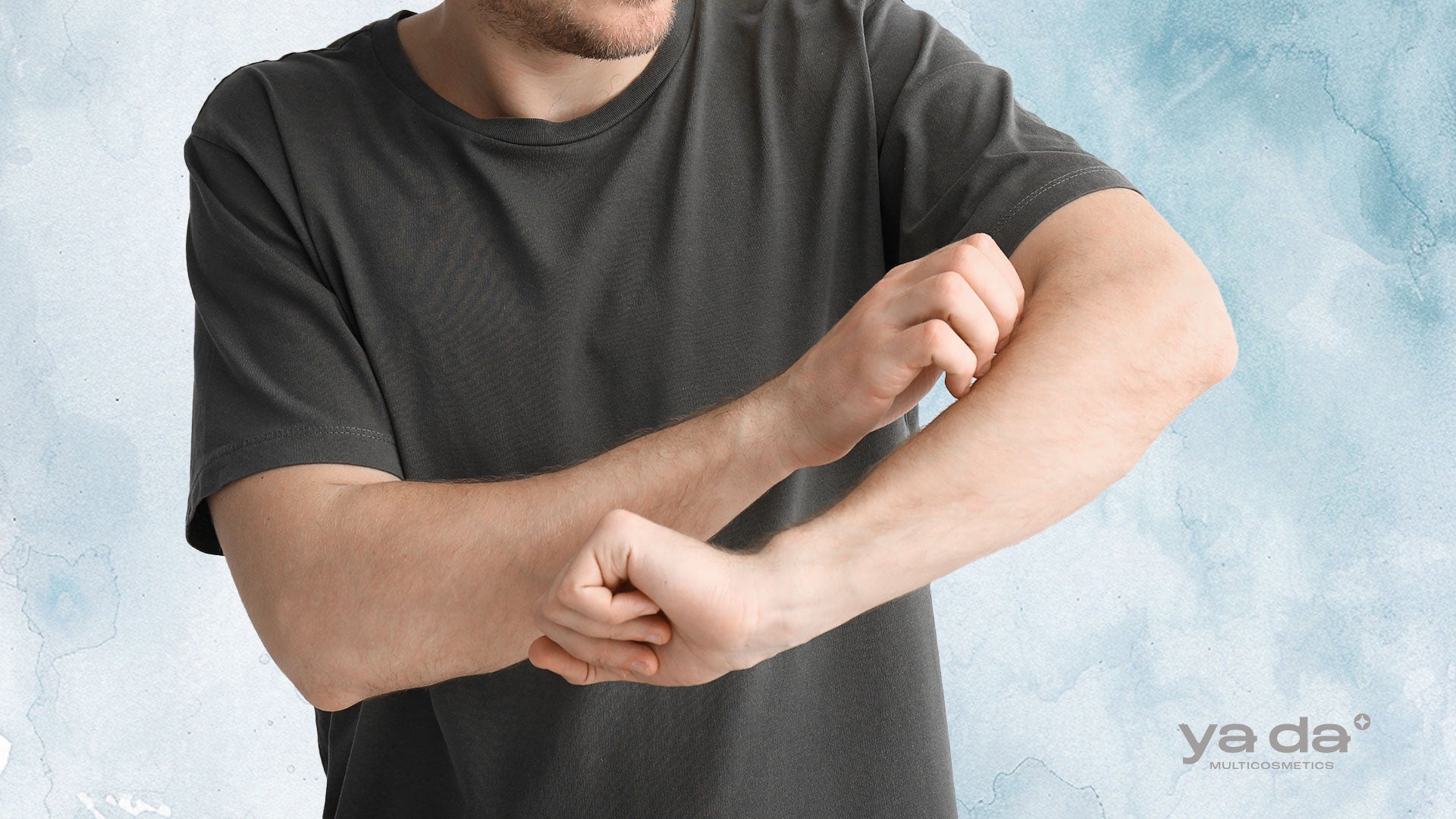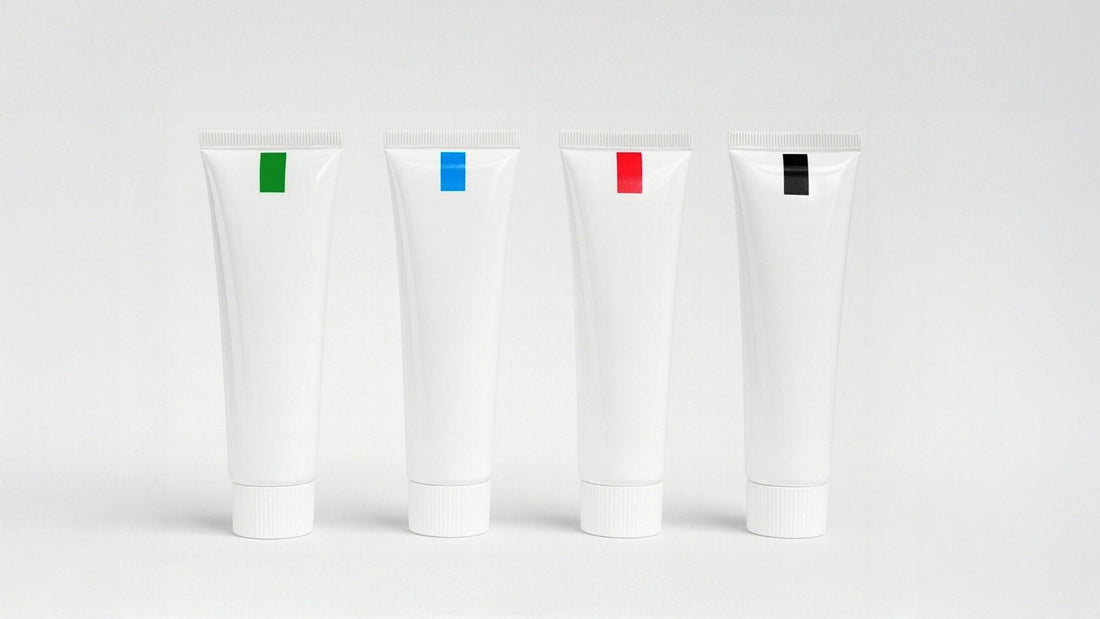What Is Atopic Dermatitis (Eczema)?
AAtopic dermatitis, commonly known as atopic eczema, is a chronic inflammatory skin condition characterized by dry, itchy, and inflamed skin. It is a common type of eczema that affects both children and adults, resulting from the complex interaction of genetic, environmental, and immunological factors.1
What Does Atopic Skin Mean?
Atopic skin refers to skin prone to atopic dermatitis, also known as eczema. Atopic dermatitis leads to excessive itching, which can cause redness, swelling, cracking, clear fluid leakage, crusting, and flaking. Research shows that individuals with atopic dermatitis have a weakened skin barrier, making their skin more susceptible to irritants, allergens, and microbial invasions.2

What Causes Atopic Dermatitis (Eczema)?
There is no single known cause of atopic dermatitis (eczema); it likely results from multiple contributing factors. Current theories explore the roles of the immune system, genetic mutations in skin structure, defects in skin cells (keratinocytes), the skin surface microbiome (bacteria, viruses, and yeasts), and several other factors.
Causes of Atopic Dermatitis (Eczema)
The pathophysiology of atopic dermatitis involves a combination of genetic predisposition, immune dysregulation, and environmental triggers. Mutations in genes encoding proteins involved in skin barrier function, such as filaggrin, play a significant role in the development of atopic dermatitis. These genetic variations compromise the skin's ability to retain moisture, leading to dryness and increased permeability. This allows allergens and irritants to penetrate the skin more easily, triggering inflammatory responses. The primary causes can be summarized as genetic factors, epidermal barrier dysfunction, immunological mechanisms, and environmental triggers. 2
Symptoms of Atopic Dermatitis (Eczema)
In the acute phase, lesions present as intensely itchy, red, thickened, and scaly patches or plaques, which may become eroded due to scratching.
In the chronic phase, prolonged scratching and rubbing result in dry, lichenified (hardened) skin lesions.
The distribution of lesions is age-specific. In infants, lesions are most commonly seen on the face, scalp, neck, eyelids, and extensor surfaces of the extremities. In older children and adults, lesions occur on flexor surfaces such as the neck, inner elbows, and back of the knees.
Severe itching is a hallmark of atopic dermatitis. Itching usually precedes lesions and is worsened by dry air, sweating, local irritation, wool clothing, and emotional stress. 3
Common environmental triggers of symptoms include:
- Excessive bathing or washing
- Hard soaps
- Staphylococcus aureus skin colonization
- Sweating
- Rough fabrics and wool
Is Atopic Dermatitis (Eczema) Contagious?
Atopic dermatitis is not contagious, so it cannot be spread from person to person.

Atopic Dermatitis (Eczema) Treatment
Treatment of atopic dermatitis is most effective by addressing the underlying pathophysiological processes.
Counseling on appropriate skin care and avoidance of triggers helps patients manage the underlying skin barrier defect. Scratching of pruritic lesions often increases pruritus, which leads to further scratching. It is important to break the itch-scratch cycle.
General skin care should focus on the most common sources of skin irritation (over-washing and harsh soaps):
- Limiting the frequency and duration of washing and bathing
- Keeping the temperature of the bath water at lukewarm
- Avoid excessive scrubbing, instead gently pat the skin dry after showering/bathing.
- Applying a moisturizer ( ointment or cream—products containing ceramides are especially helpful)
- Reducing emotional stress is helpful and helps break the itch-scratch cycle .
Does Eczema Go Away On Its Own?
Since this condition is completely related to immunity, it is also possible for it to go away on its own.
What is Good for Eczema?
According to the article written by Chang et al., there is more than one treatment method.
Topical Corticosteroids: One of the most commonly used treatments for eczema. Corticosteroid creams help reduce inflammation in the skin and relieve itching. However, long-term use can cause side effects such as thinning of the skin.
Moisturizers and Wet Wraps: Keeping the skin hydrated is an important step in managing eczema. Moisturizers help prevent water loss from the skin. Wet wraps help retain moisture for longer periods of time and reduce itching.
Antihistamines: These drugs are used especially to relieve itching and are also preferred to help with sleep.
Topical Immunomodulators (Tacrolimus and Pimecrolimus): These medications reduce inflammation by regulating the skin's immune response. They are used as an alternative to corticosteroids and may be safer with long-term use.
Phototherapy (UVB): Ultraviolet light therapy slows the growth of skin cells and reduces inflammation. This may be used in severe cases of eczema.
Oral immunosuppressants: Medications such as cyclosporine A, methotrexate and azathioprine relieve eczema symptoms by suppressing the immune system. However, these medications can have serious side effects and are usually only recommended for severe cases.
Natural and Alternative Treatments: Alternative treatments such as probiotics and nutritional supplements can also be used to manage eczema. Probiotics have been shown to reduce the risk of eczema, especially in infants.
The effectiveness of these treatment methods may vary depending on the patient's condition, and the treatment plan should be determined by a dermatologist or allergist. 1
Products for Atopic Dermatitis (Eczema)
The products to be used for atopic dermatitis should primarily have gentle ingredients due to the sensitivity of the skin. It is important to choose products that will not irritate the skin and will support its repair.
The atopic dermatitis care set, especially prepared with ceramide, skin amino acids, minerals and effective natural extracts, supports the relief and renewal of the skin while helping to reduce its symptoms.
Moisturizing the skin is another important requirement. To achieve this, it is of great importance to use products with high moisturizing properties and safe ingredients.
Resources
- Chang C, Keen CL, Gershwin ME. Treatment of eczema. Clin Rev Allergy Immunol. 2007 Dec;33(3):204-25. doi: 10.1007/s12016-007-0033-8. PMID: 18163227.
- Avena-Woods C. Overview of atopic dermatitis. Am J Manag Care. 2017 Jun;23(8 Suppl):S115-S123. PMID: 28978208.
- https://nationaleczema.org/eczema/
- Ruenger, T. M. (2023, January). Atopic dermatitis (eczema). In Merck Manual . Georg-August University of Göttingen, Germany. https://www.msdmanuals.com/professional/dermatologic-disorders/dermatitis/atopic-dermatitis-eczema





